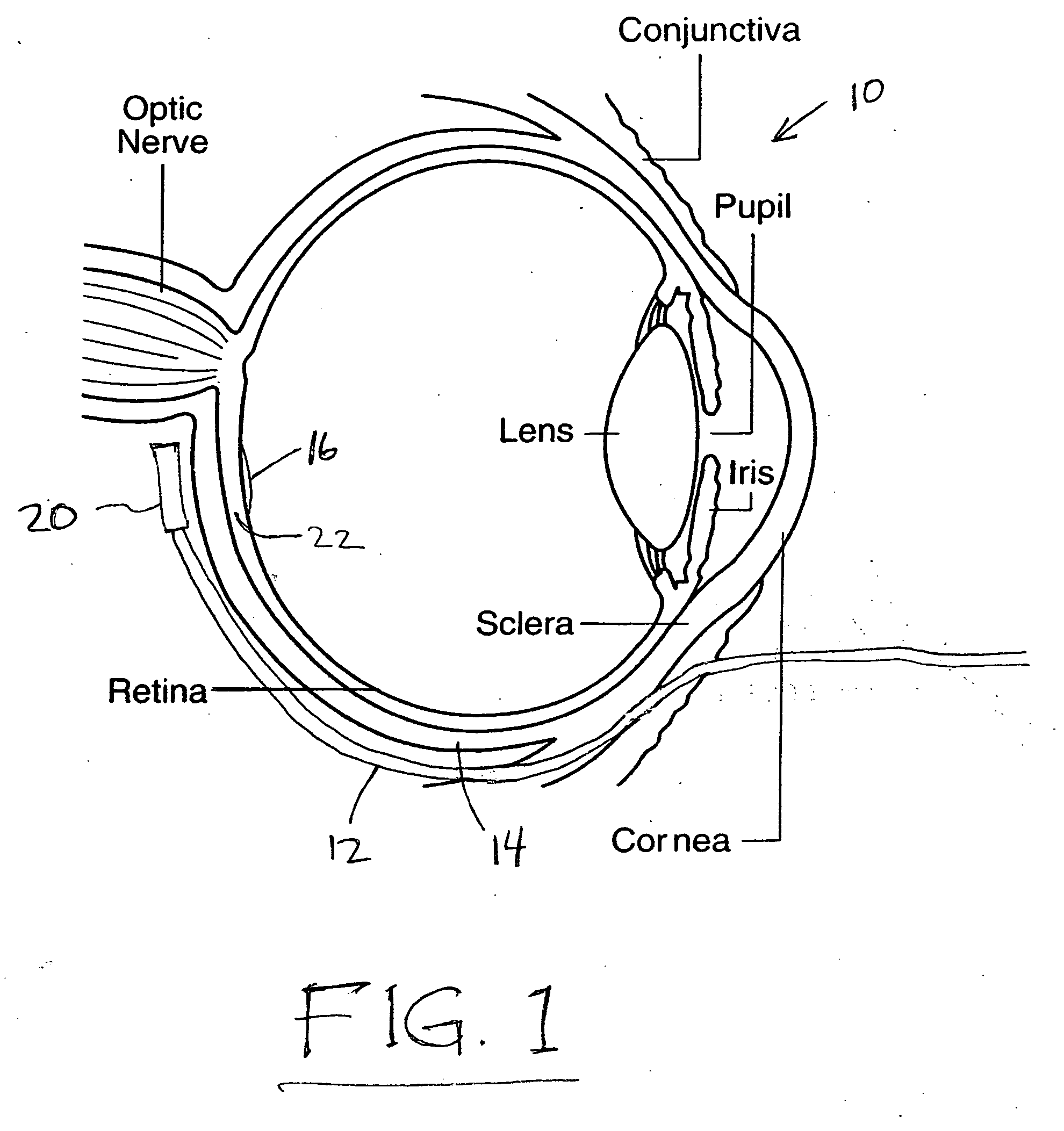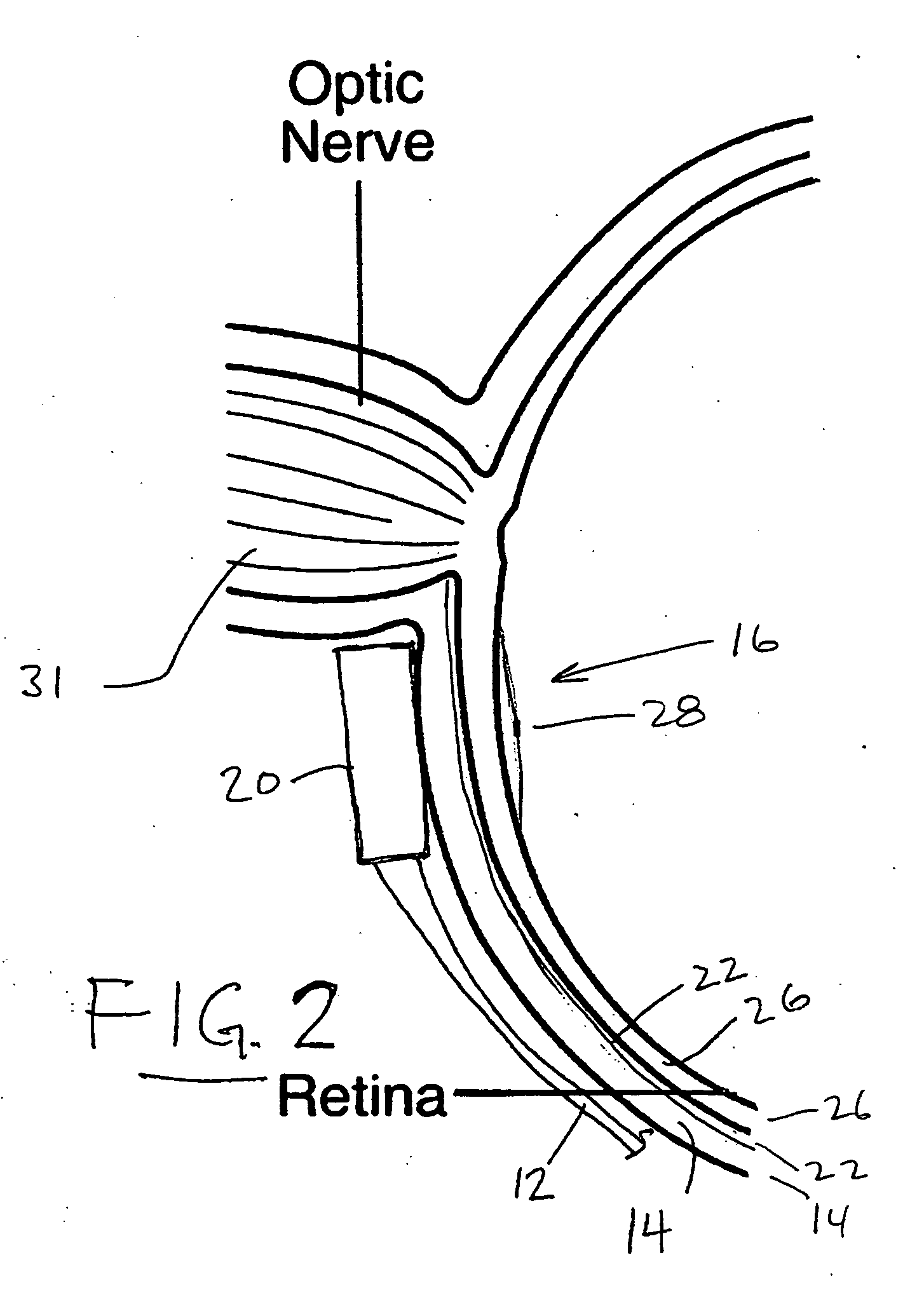Treatment of age-related macular degeneration
a technology treatment method, which is applied in the field of age-related macular degeneration treatment, can solve the problems of central vision distortion, obscuring the ability of a physician, and severely affecting the patient's vision at the highest resolution, and achieves reliably accurate directional emission and placement. accurate
- Summary
- Abstract
- Description
- Claims
- Application Information
AI Technical Summary
Benefits of technology
Problems solved by technology
Method used
Image
Examples
Embodiment Construction
[0047]FIG. 1 of the drawings shows a patient's eye 10, generally in plan view and cross section, and schematically indicates a probe or catheter device 12 inserted around the globe of the eye, along the surface of the sclera 14. The macula, or macular region, a region of the retina of the eye, is shown at 16. The probe or catheter device 12, which is shown schematically, includes a switchable x-ray source 20 at its distal end. An applicator or guide device may be included, to be inserted around the eye and through which the catheter is inserted. The source 20 preferably comprises an x-ray tube which emits radiation when switched on and which optionally can be varied as to current and voltage, emitting a side-looking directional radiation toward the macula 16, through the sclera 14 and the choroidal membrane or layer immediately behind the macula. The source could be an isotope, with controlled shielding if desired. Accurate positioning of the x-ray source 20 is an important aspect o...
PUM
 Login to View More
Login to View More Abstract
Description
Claims
Application Information
 Login to View More
Login to View More - R&D
- Intellectual Property
- Life Sciences
- Materials
- Tech Scout
- Unparalleled Data Quality
- Higher Quality Content
- 60% Fewer Hallucinations
Browse by: Latest US Patents, China's latest patents, Technical Efficacy Thesaurus, Application Domain, Technology Topic, Popular Technical Reports.
© 2025 PatSnap. All rights reserved.Legal|Privacy policy|Modern Slavery Act Transparency Statement|Sitemap|About US| Contact US: help@patsnap.com



